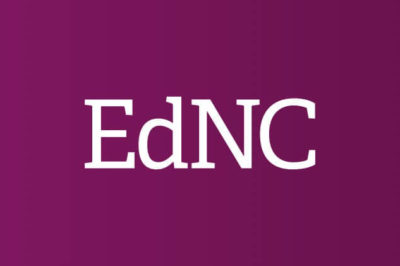
When the news broke on January 3 that one of North Carolina’s largest school districts, Cumberland County, was considering a shift to virtual instruction in response to rising case counts of the Omicron variant, I felt my stomach lurch.
Again? I asked myself. Are we really going to make the same mistake over and over, hoping against all evidence that the outcome will be different this time?
The reassuring answer, at least from school officials in Cumberland, was no. A day later, they decided to resume in-person classes as planned. As far as I know, other North Carolina districts are staying the course, as well, adopting the model that most charter and private schools did last year: take COVID seriously, take reasonable precautions, but don’t shut your doors to those who need your essential services.
There remains plenty of room for debate about various policy responses to the pandemic. I’m a big fan of vaccines, for example, but opposed to federal mandates I view as unconstitutional. I also doubt that that even legal state mandates and private requirements are cost-beneficial (they may boost vaccination a bit but at the cost of reinforcing the very conspiracy theories that need rebutting). Still, I’m open to hearing good-faith counterarguments.
Similarly, how much do masks of differing materials reduce the risk of transmission? What’s the most efficient way to improve ventilation in closed spaces? Let’s talk.
When it comes to school closures, however, the evidence is now overwhelming that they imposed great economic, educational, and social costs on families while having little effect on COVID hospitalizations or fatalities. Schoolchildren were neither at significant risk of getting seriously ill nor of becoming a major vector of transmission. Indeed, the virus often spread more rapidly outside of schools than inside them.
In May 2020, I wrote that if parents were “comfortable sending their children to school on buses or cars before the COVID-19 pandemic, but now say they are unwilling to send their children back to school — or to gymnastics, band practice, soccer leagues, or swimming pools — until the coronavirus threat is essentially extinguished, I would gently but firmly question whether they have properly assessed the relevant risks.”
You need not take my word for any of this, by the way. That school closures were cost-ineffective in containing the pandemic has become the prevailing wisdom among most experts in America and around the world. It’s certainly the prevailing sentiment now among parents, and among politicians of both parties who seek to avoid the fate Terry McAuliffe suffered in last fall’s gubernatorial election in Virginia.
Just the other day, the New York Times observed that “children face more risk from car rides than COVID.” Precisely.
Public policy is about managing risks, not eliminating them entirely. You only get to do that in imaginary worlds, not real ones. In his classic work Searching for Safety, political scientist Aaron Wildavsky illustrated the point with his “jogger’s dilemma.” At precisely the moment you’re exercising, you raise your risk of a heart attack. But “for the rest of the day, as well as the days in between regular exercise, the body is safer.”
Getting the balance right requires a clear conception of the goal and how best to measure it. Here’s something else I wrote back in May 2020: “The initial mandatory closures of our schools, businesses, and other institutions were not sold as eliminating the threat from COVID-19, either to children or to adults. That is not possible. The threat can only be mitigated somewhat until therapies or vaccines are broadly available, and even then a background risk may remain as it does for many other dangerous illnesses.”
We are rapidly approaching that stage. Effective vaccines are broadly available. Effective therapies soon will be. Yet the disease isn’t going to disappear. Pandemic will become endemic. We’ll be far less likely to become seriously ill or die from it, but the risk will never plummet all the way to zero. Reality intrudes.
Recommended reading



